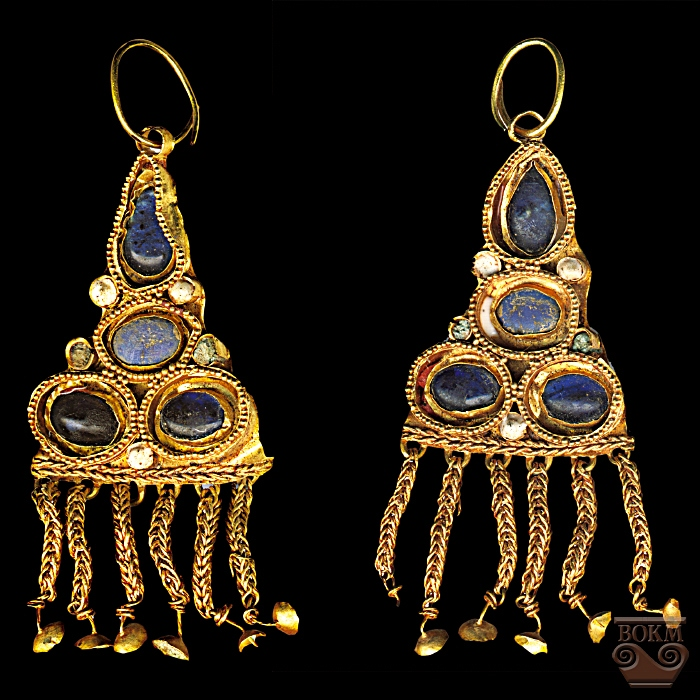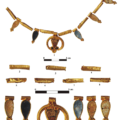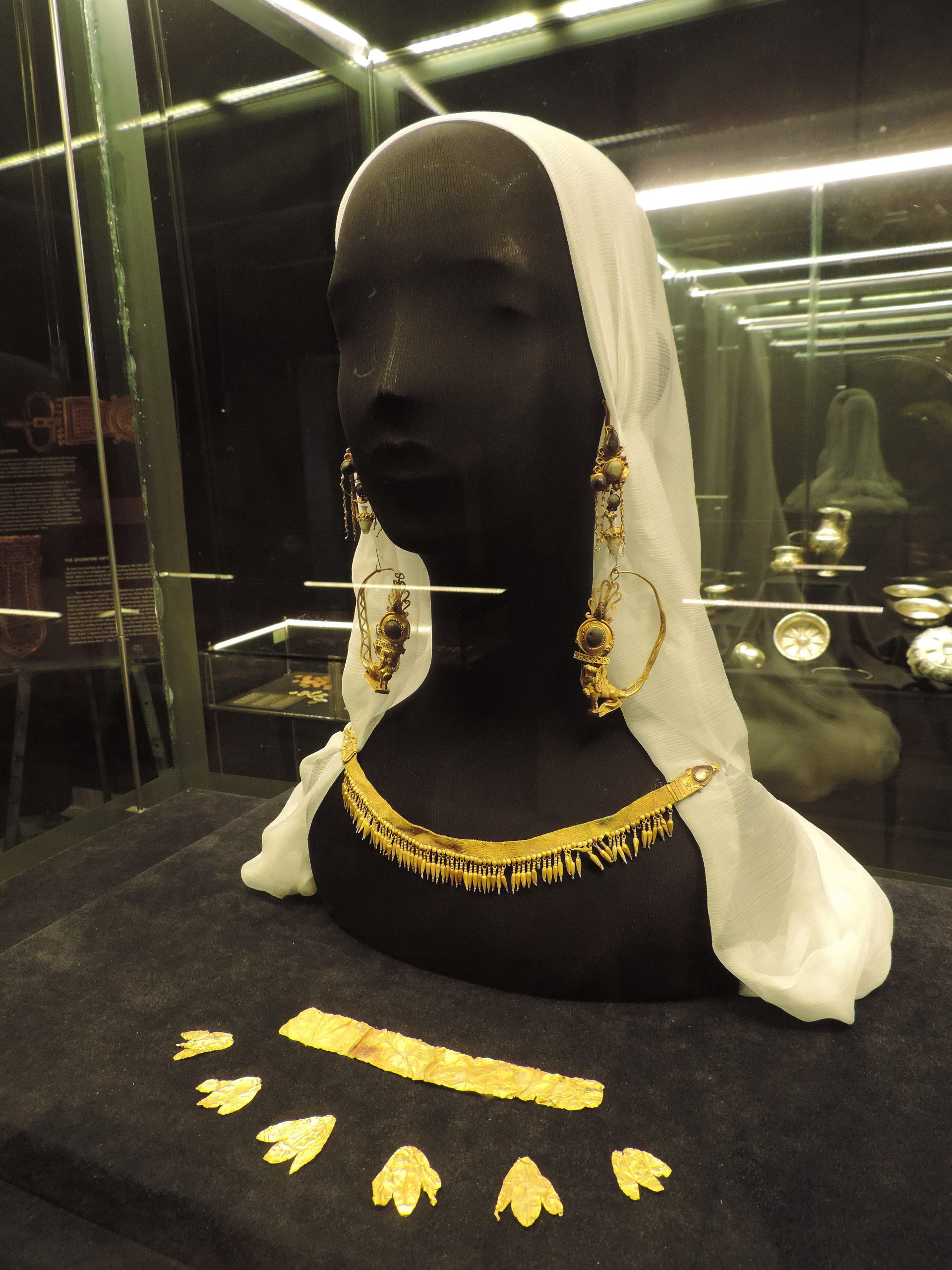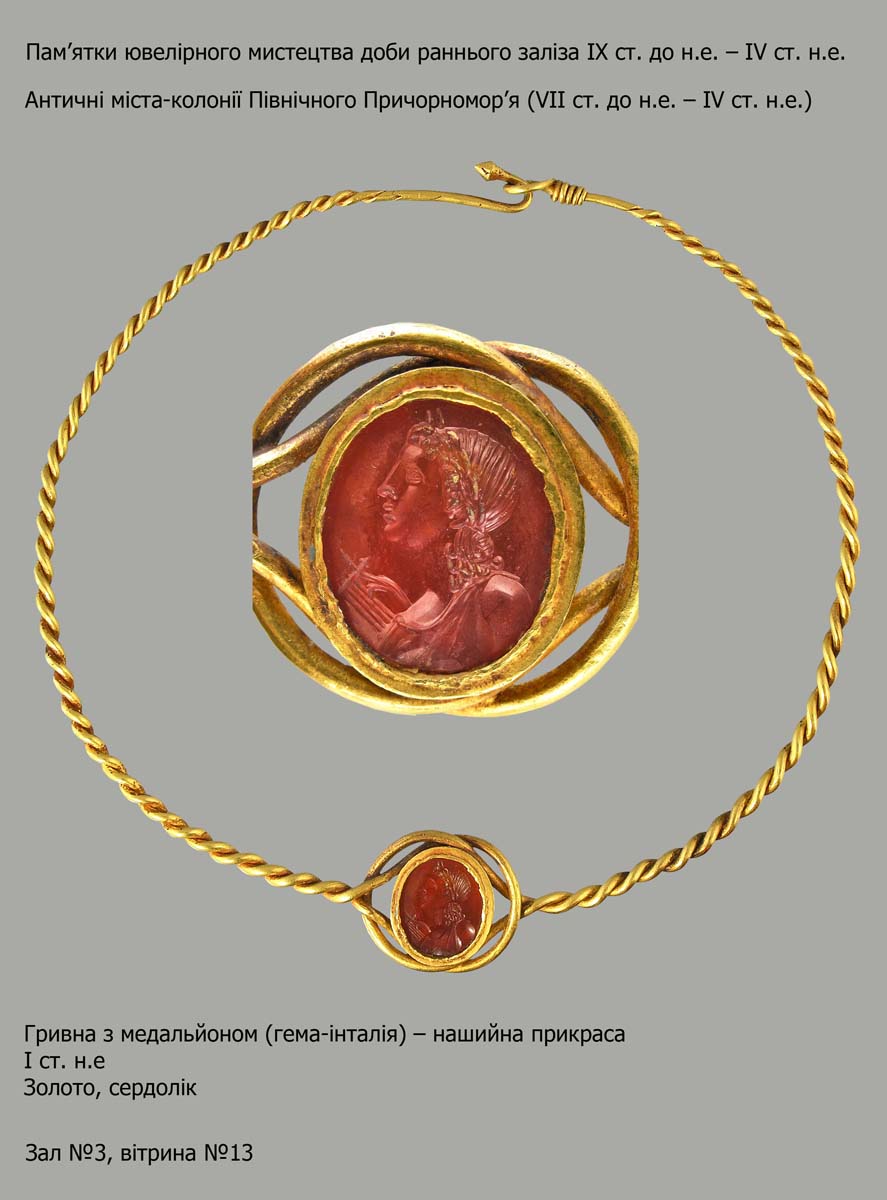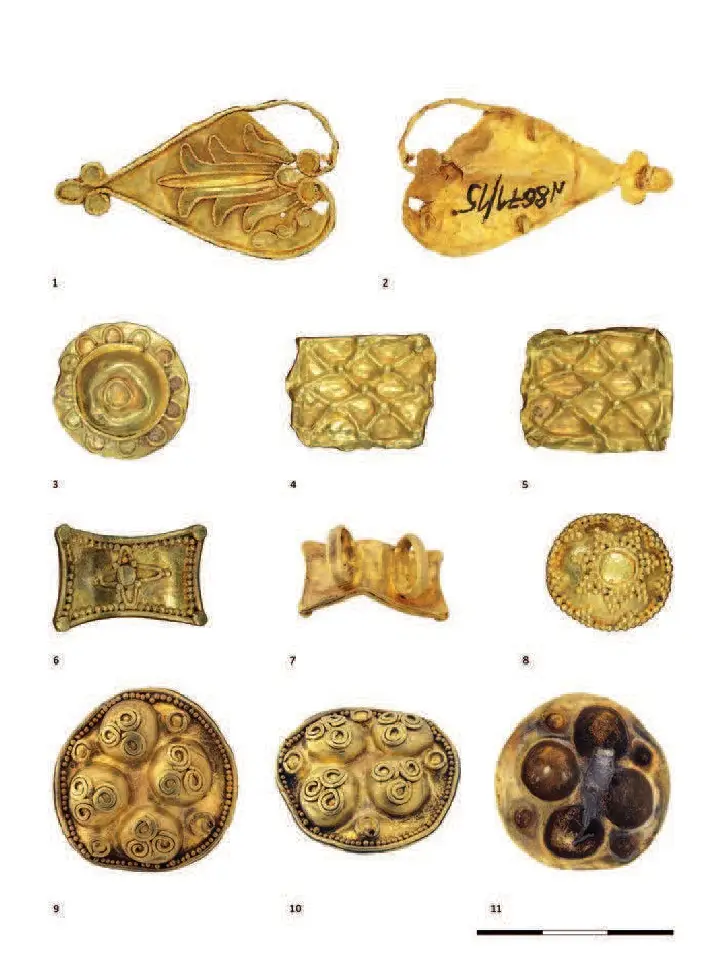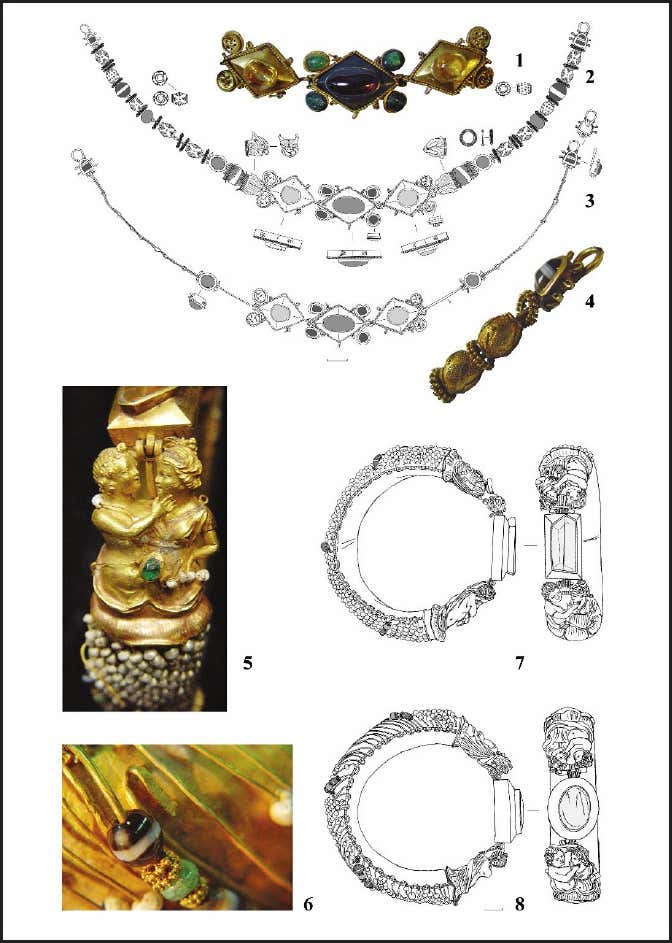Jewelry from so-called Buzau treasure, a set of gold adornments found somewhere in Buzău area, was bought from an antiquarian in 1941 by Vladimir Dumitrescu, director of National Museum of Antiquities. Items purchased include the pair of earrings; gold ring with semi precious opaque dark green stone; flower-shaped and elongated appliques
three small tubes; small pendants and parts of the pendants.
Gold triangular earrings with the bell-shaped pendants with chains are inlaid with red and turquoise stones. They were made in the 1st century CE most likely. They are thought to be a local production, in the northern Black Sea area Sarmatian period.
National History Museum of Romania [MNIR]
inv. no. 9006-7
Earring no. 1 [unbroken]
total length = 82 mm, length of the shield = 41.4
mm, width of the shield = 33 mm


“vertical hoop made of gold plate, with groove on the middle, attached on an oval bezel-setting, framed with granules, which stone has not been preserved; a rhombic bezel-setting, framed with granules, too, and the stone missing is situated under the oval bezel setting; on both sides of the rhombic bezel-setting there are two little bezel-settings, each of them ornamented inside with curled wire; two circular bezel-settings, framed with granules, inside of which two red, round stones are fixed by a disk of gold plate, with inner edges profiled, can be observed under the rhombic bezel-setting. On both sides, in the angle made by the lower part of the shield and the bezel-settings there are other two small bezel-settings, with turquoise stones, of which only one is preserved. Two adjacent rows of coarse filigree gold wire can be seen at the bottom of the shield. The upper row has the wire inclined towards left and the lower row towards right. On the back of the shield are soldered small hoops made of wire, with flattened ends for better fastening, on which the chains are hanging down. The eight chains are made of simple, circular, bent loop in loop. Each chain is ending with a small hemispherical pendant made of gold plate (one of the pendants is missing)” [Liana Loredana Oţa, Silviu Oţa]
“the source of inspiration of the triangular items in Buzău is represented by the 2.4.2 type earrings, belonging to the polychrome style, most of them dated during the 1st century AD, found in a relative small number of discoveries north of the Black Sea or in the Greek cities of Tomis, Olbia and Panticapaion (Fless, Treister 2007, p. 174). The close typological relations of the items in Buzău with the earrings in T. 1 M. 2 in Porogi were previously highlighted (Harhoiu 1993, p. 44-45). Despite of some detail differences (chains different as manufacture), the earrings in Porogi (Simonenko, Lobaj 1991, p. 30-31, nr. 1, ris. 19/1; Simonenko 2008, Taf. 133/5) are the closest analogy for the items in Buzău. A pair of similar earrings, with the bezel-settings placed in three bands (the middle one round, not rhombic) and with chains ending with plain circular foils, and a pendant in the shape of men in the middle (Loboda, Puzdrovskij, Zajcev 2002, p. 324, nr. 13, Abb. 16/1, 2; Mordvintseva 2002, p. 348-349) was found in catacomb 620, burial no. 1 in the cemetery of Ust’-Al’ma. The earrings found in the barrow 5/40 in the necropolis of Čertovickij I (Medvedev 2007, p. 270, Abb.5/6-7) can be cited as analogy for the manufacturing manner of the chains, but not for the settings, placed only in two bands, not three. Similar chains, but ended with geometric pendants are noticed on the adornments from barrow 20 in NovoAleksandrovka (Simonenko, Mel’nik 2004, p. 276, Abb. 4/2). Despite the differences regarding the disposing of the ornament, the manufacturing mode, based on the association between precious metals and stones or coloured glass (Fless, Treister 2007, p. 165), the shape of the decorated shield and the presence of pendants are characteristics individualizing this typological group of earrings of local production (Mordvintseva 2002, p. 351; Fless, Treister 2007, p. 182).”
“In the Roman world, the earrings with pendants and setting under which is fixed a horizontal strip began to be used much later, at the middle of the 2nd century AD earlier, but especially during the 3rd century, lasting sometimes until the 4th century (Popović 1996, types VIII/2 a/3-4 and IX/1a/3, pp. 122-123 and 125).”

Romania [after M. Tonkova]
To compare earrings mentioned in the article

1st century
©Вінницький обласний краєзнавчий музей

Female burial, the cemetery of Ust’-Al’ma; 2nd century

Earrings in the form of male figurines were kept in the Bakhchisarai Museum Reserve. Photo: bikz.org
https://www.crimea.kp.ru/daily/26616/3637019/
More to compare
Ring and ornaments from the Buzău treasure


- “THE TREASURE OF BUZĂU”/„TEZAURUL DE LA BUZĂU”, Istros XXI, 2015, p. 537-576; Liana Loredana Oţa, Silviu Oţa https://www.academia.edu
- The jewellery of a wealthy Thracian woman from Anchialos and the fashion in Middle and Late Hellenistic jewellery; Milena Dimitrova Tonkova https://www.researchgate.net
- Vitalie Bârcă, THE REINTERPRETATION OF THE SARMATIAN FINDS FROM THE ROMANIAN PLAIN (I), Journal of Ancient History and Archaeology, 2/1, 2015, p. 35-71. DOI: http://dx.doi.org/10.14795/j.v2i1.105

